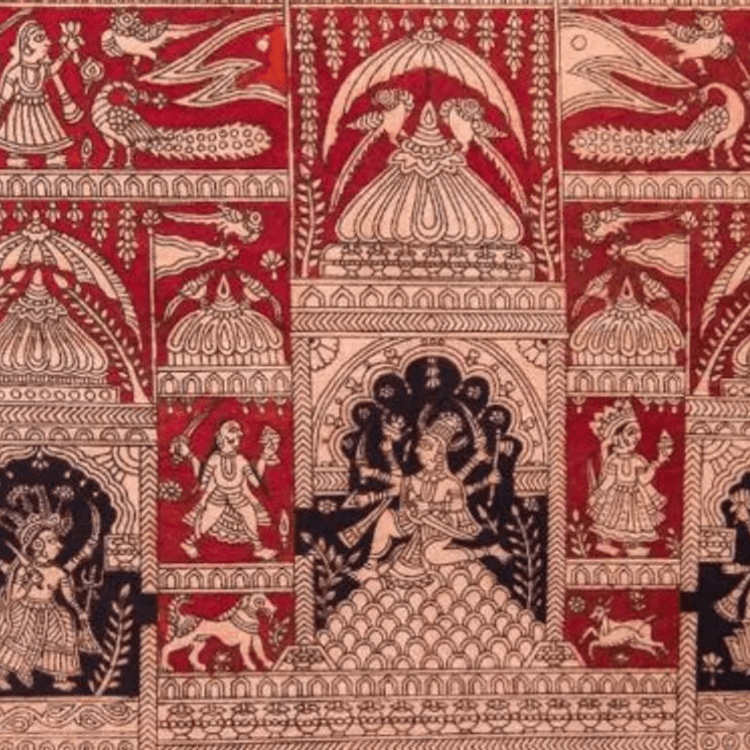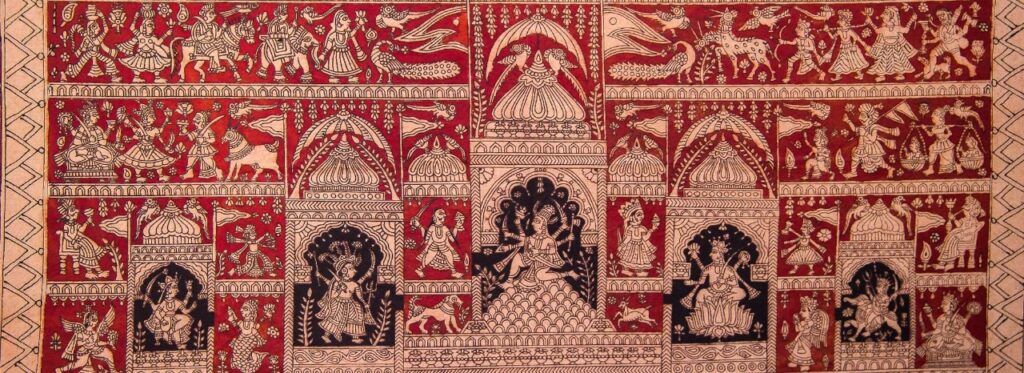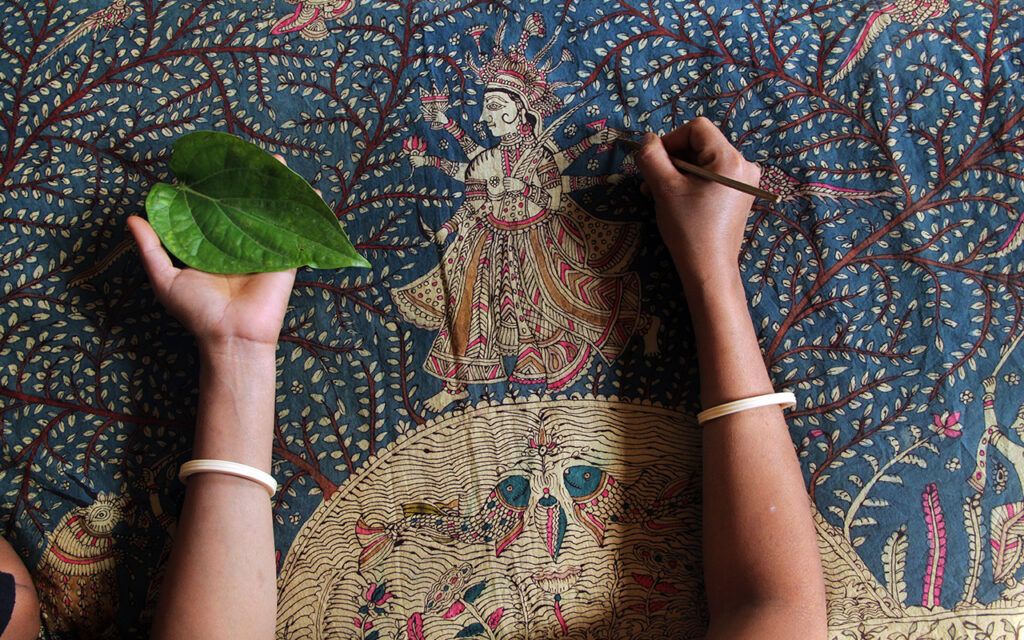
Your Cart
Lesser-known motifs of Mata Ni Pachedi

Located on the banks of the Sabarmati River in Gujarat is the small Vaghari community. Also, known as the Devipujaks they might seem like any other ordinary settlement of people. But their artistic abilities, resilience, and spiritual fervor are what have helped them claim a place in the world of art and culture. They are the creators of the beautiful and meaningful Mata ni Pachedi!
Mata ni Pachedi is a religious hanging that is meant to be used in temples of Goddesses or ‘Mata.’ It is a handmade folk textile that depicts paintings of goddesses and events from religious epics. However, in modern times, they are also used as wall hangings in homes.

Origins of Mata ni Pachedi? ---------------------------
Mata means ‘mother goddess’, ni means ‘belonging to’ and Pachedi means ‘back.’ Though Mata ni Pachedi remains largely a spiritual and religious offering, its origin lies in socio-cultural factors.
The Vagharis belonged to the lower caste and were constituted as ‘untouchables.’ Because of this, they were not allowed to enter temples for years. However, the community found a unique way to worship and continue their spiritual endeavors in spite of being denied entry into places of worship. They started painting the images of the goddess on cloth and hung them behind the temple walls. And thus, the Mata ni Pachedi which translates into ‘Behind the Mother Goddess’, came into being.
It has been around 300-400 years since this practice began. And to date, the tradition of making the hangings continues in the homes of the community.
Motifs on Mata ni Pachedi -------------------------
Undoubtedly, the main motif which is centrally placed on the textile is that of a Goddess. According to the community’s beliefs, there are more than 100 forms of the Goddess. Each goddess has her own unique vehicle which is an animal. The different goddesses who are painted on the Mata ni Pachedi are Goddess Ambika (usually riding a tiger), Bahuchara (on a cock), Meladi (on a goat), Khodiar(riding a crocodile), and Vishat (on a water buffalo). Other Gods, such as Ganesh and Krishna, or events from Ramayana and Mahabharata are also the main focus of the painting.
Interestingly, the paintings are marked with symbolizations and deeper meanings. The artist doesn't just seek to idolize the Goddess or God alone. But also, use motifs and colours to understand emotions and educate viewers. For example, the Goddesses are seen carrying a sword or conch in their hands. However, these accessories have more meaning to them than just their actual discernable uses. A sword symbolizes the removal of evil. A conch, on the other hand, symbolizes happiness. Similarly, the maroon colour is considered the colour of the earth, symbolizing healing powers. Black is used to wading off evil energies and white is a sign of purity.
Thus, the motifs are a great way to understand the universal concepts that are also meant to be a part of religious devotion. There are several other motifs that are painted around the central main motif that has both a purpose and place. Here is taking a look at some of the lesser-known motifs that are seen on the Mata ni Pachedi.

5 Lesser Known Motifs of Mata ni Pachedi ----------------------------------------
### 1\. Deer
Different animals are painted on the Mata ni Pachedi. Some of the animals are painted for aesthetic purposes, while others are a part of the religious events that are portrayed on the Mata ni Pachedi. The deer is one of the lesser-known motifs that is found around the central figure. It might be used to depict the forest where Rama stayed. Or it might express natural surroundings. Other animals, such as the peacock, parrots, and birds are also part of the paintings.
### 2\. Sun
The sun with rays emanating from all sides is another motif found on the Mata ni Pachedi. The sun symbolizes the continuance of life, as it is responsible for the cycle of day and night. It is often placed in the top left corner of the fabric. Also, the sun is in fact, the Sun God with facial features.
### 3\. Woman with flowers
Though the focus is on the Goddess, the common man, and woman is also depicted in the paintings. Women painted with garlands and flowers are one of the motifs that are often painted around the central story. For example, the woman might be shown welcoming and celebrating the return of Rama from the forest.
### 4\. Shravan Kumar
The painting of Shravan Kumar and his blind parents is a well-known tale of devotion and righteousness. A symbol of piety, Shravan Kumar is seen carrying each of his parents in a bamboo basket attached to a pole resting on his shoulders.
### 5\. Tree of Life
Contemporary paintings of the Mata ni Pachedi have seen an increase in the depiction of the Tree of Life. The Tree of Life is a symbol of positivity and the connection between heaven and earth. The Tree of Life, fraught with birds, and peacocks and emerging in varied shapes looks resplendently beautiful on the Mata ni Pachedi.
There are many other smaller motifs that are added to the textile which add meaning and exuberance to this art form. An art that is nurtured with care and experience, Mata ni Pachedi is a perfect example of the blend of spiritual, social, and cultural nuances.